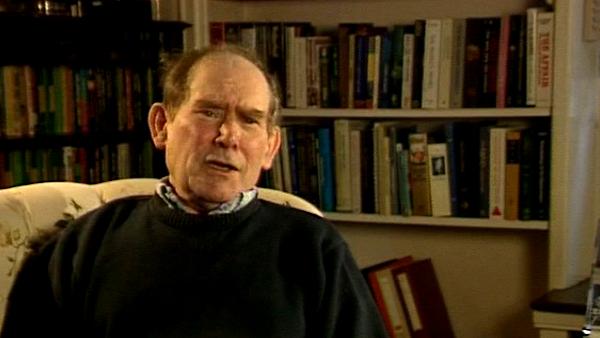Well, I think the other most important thing was in fact the fusion of genetics and biochemistry, and it's worthwhile just looking back as to what a mess genetics got into. At the turn of the century, when genetics had become an established science, many people went into genetics because the problems they were working with were insoluble. And the most important one is TH Morgan. TH Morgan started life as an embryologist, and which he found intractable. And he has written in his book Regeneration that in fact… he turned to genetics because this would give him a new entry into development. And most of the early geneticists did that. To try to find genes and the mechanisms of these… of this. By the beginning of the war – that is after the first biochemical genetics in drosophila had been done, that is the eye colour – it had become clear that it… it was extremely difficult to get any deeper than just finding a mutant and finding out what it does. That is the purely descriptive level. And that is why when people started to work with neurospora, Beadle and Tatum started to do biochemical genetics, this immediately attracted people like Ephrussi and attracted people Jacques Monod into this, and of course by 1945 we had this idea that what genes do is control biochemical processes. And there it got stuck, and organismal genetics up to that time, beyond that time, had gone in the direction of population genetics. Drosophila, which had been a huge rich source of genetics was now in the hands of population geneticists, selection thing and the only thing that was beginning... was come along was the biochemical genetics of micro-organisms. And so it is the fusion of biochemistry and genetics that I think represented another thing which was completely absent at the time and that you could actually think of experiments which were designed to test the hypothesis. You could say, 'If this controls this enzyme, then it follows that if I get such and such a mutant the following would happen'. And that was such a remarkably interesting thing to be able to do in biology. And of course working with bacteriophage was very interesting, because I remember someone asked me, 'What statistical test do you use for significance?' You see, because normally in biochemistry you would do a subject by estimating the amount of calcium in the blood of an animal under different experimental conditions, then you do statistics to see if the differences were significant. And so I remember I said to him, 'We don't do any statistics… oh, I'm sorry, we do have one test. We plot our results on seven-cycle log paper – that is it goes over 107 – and you hold the sheet at one end of the room, and you stand at the other end of the room, and if you can see a difference it's significant'. So… so that was of course another different approach. And of course the other interesting thing…
[Q] Sorry Sydney, why… why did you not do statistics? Because the results were so clear-cut?
Well, they were… they were a thousand times, a million times. And let me just go back to this thing, you see, because the other thing was genetics is digital; it's all or none. We didn't have to make any quantitative measurements. And when you think about it, it's very remarkable subject, or was at that time. That is, if you're testing a recombinant, either you get a recombinant or you don't. Later on you can actually measure how much recombination. But you can do everything by one and zero. You can actually do yes/no. And you can then do very remarkable results, very remarkable experiments, just on this, these very simple Boolean primitives in a way that you could not do in any other subject. And in fact you could design your experiments so that, you know, deletions never revert, therefore if you cross and you get anything, this must be recombination. And so I think that that was another way of having an extremely facile experimental system, and many things that we learnt… you know, we did everything with pieces of paper, toothpicks, it was... it was a marvellous period in… in which you could make these mixtures and go and have a look if there were holes or not and deduce things about the structure… the molecular structure of organisms.






